
|
| Accept Cookies | Customize | Refuse Cookies |
Abulafia www.juzaphoto.com/p/Abulafia  |
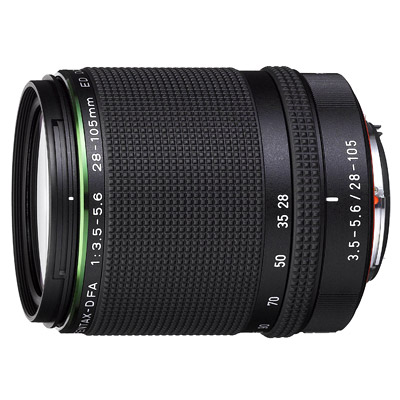 | Pentax HD FA 28-105mm f/3.5-5.6 ED DC WR Pros: Excellent yield (sharp, homogeneous, contrasted and with good colors) and excellent construction (tropicalized and motorized) Cons: The starting 28mm, you could make the effort to go down to 24mm. Opinion: I bought this used lens in December 2022 to give a worthy "battle" companion to my K-1: I usually prefer to use fixed and / or vintage lenses (in fact for a year I had used an old, but performing, Variozenitar 25-45), but there are situations in which the modern zoom and autofocus definitely simplifies shooting operations. The 28-105, even as the only lens, is the ideal companion when you want to carry little weight around or when you go to photograph a place that you do not even know "in the abstract", or when the physical conditions of shooting do not allow an easy change of lens as needed. The yield of the 28-105 is that of a perfect modern lens: clean, sharp, contrasted, homogeneous throughout the image. The use is easy, the autofocus is ready and silent, the rings are wide and well frictioned; Excellent the usual hood with window to turn the polarizing filter. Tropicalization is a priceless plus on a "low-end" lens, which allows you to use it without hesitation in any weather or field situation. I've only had it for 4 months, but it has already become indispensable. sent on March 22, 2023 |
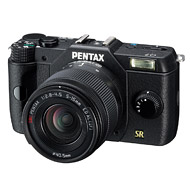 | Pentax Q7 Pros: Lightness, dimensions and portability. Interchangeability of objectives without having to be constrained to a single focal or to a single zoom. Excellent image presets. Excellent image processor, good dynamic range and high ISO yield infinitely better than even a modern mobile phone. Simple and tidy menus. Cons: Lacking some specialized lens, it would have been nice to have a macro or an autofocus supertele. The system is still in production with the Pentax Q-S1, but in semi-abandoned state. It's addictive. Opinion: sent on August 28, 2018 |
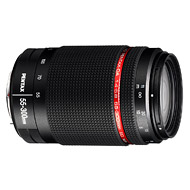 | Pentax DA HD 55-300mm f/4-5.8 ED WR Pros: Excellent construction. Size and weight in relation to focal hike and construction. Optical quality between 75 and 220mm. Held against the light. Price. Cons: Autofocus speed. Yield over 250mm. Opinion: The HD 55-300 is a great goal, certainly comfortable traveling, in the mountains or when it is useful to have a large amount of foci carrying a limited weight and footprint, but without having to give up too much quality. The lens is in fact sharp, contrasty and with bright colors. The yield is excellent, with very few aberrations (and only in limit conditions) and a strong resistance to flare (almost non-existent). The yield does not vary much from the minimum distance of focus to long distances, remaining always much more than good, often excellent. The shorter focal lengths, under the 75mm, lose a quality nap, recoverable by closing a stop. The longest focal lengths, above 250mm but above all around 300mm, give a few more problems and to have a high quality you have to think of closing even a couple of stops. The intermediate focal lengths, from 75 to 220, are remarkable, above all around 100-150mm, focal point where the lens is clearly the best, even at full aperture. The construction is excellent, the lens really resists everything. The only real downside is the autofocus speed, really pachydermic (at least on K-5). sent on July 11, 2018 |
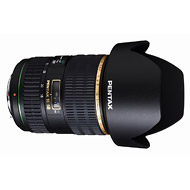 | Pentax SMC DA* 16-50mm f/2.8 ED AL (IF) SDM Pros: More than excellent construction. Excellent sharpness from F/4 onwards. Very micro-contrast. Naturally bright and well balanced colours. Fuzzy level. Cons: Price now disproportionate. Bad resistance to backlight, with tremendous flare very often colored. Remarkable chromatic aberration. Reveable ergonomics, the zoom ring is very small and backward, in contact with the machine body. SDM engine at risk of breakage if the lens is rarely used. Opinion: I bought this lens by paying it €200 used, since it had the SDM engine broken; This does not prevent you from using the autofocus lens, as it is possible to convert it to "whisk" (exploiting the internal engine of the camera) with a simple computer operation. My judgement is therefore influenced by not being able to use the ultrasonic motor and the very low price paid to take the goal. We immediately clear the field from doubts: The lens is not worth the thousand euros that it costs from new, with that figure is much better, even just buying the new D-FA 15-30 for full frame, or the excellent from 20-40 Limited, or the bright Sigma ART 18-35/1.8; With much less expense there are the honest Tamron 17-50/2.8 and the remarkable Sigma 16-50/2.8 as well as the Pentax Da 17-70/4 and the Pentax da 16-45/4. These last four lenses are definitely worse in general, but with a much more inviting quality/price ratio. The major problems are related to backlight: The flare is difficult to control and often ugly and colored green. More than the frontal light, it fears the side lights or in the corners of the frame. Chromatic aberration is also very evident, but much easier to control and correct. In contrast, the lens is sharp, resolute, bright and clear, and returns vivid but natural, detailed and three-dimensional images. In addition it is built in a more than excellent way, it seems ready to make war (and it has no problems with water, snow, rain, mists, humidity, oil, beer and whatnot). It is also very well balanced, easy to handle in hand and for anything "heavy" or uncomfortable. The only flaw at the constructive level is the zoom ring, really too backward and a little ' small, but the race short enough to be usable in any case in speed. My specimen is also very sharp at f/2.8, with acceptable edges; At F/4 however it improves visibly, especially in homogeneity. At f/5.6, for landscape, it's perfect. sent on July 11, 2018 |
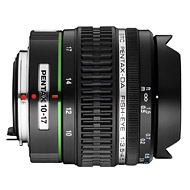 | Pentax SMC DA 10-17mm f/3.5-4.5 ED Fisheye Pros: Fantastic colors, accentuated microcontrast, is the only fish-eye on the market that can mount filters, dimensions, versatility. Cons: Purple fringing really accentuated, lack of tropicalization. Opinion: The Pentax 10-17 / 3.5-4.5 fish-eye is a fantastic goal. Now I have it for more than two years and there is no occasion where you do not take it with me.rnUnlike the "normal" fish-eye, the Pentax has a couple of interesting features: it is zoom, and can mount filters a vite.rn1) As for the zoom, unlike for example the Canon 8-15, Pentax does not pass from circular to diagonal. The zoom is a true zoom: at 10mm the lens is a complete fisheye, at 17mm it is a "cropped" fish-eye, which means that it loses some of the typical deformation to become a slightly distorted wide-angle lens.rnThis, combined with the fact that the lens is really small, manageable and autofocus, makes it a great companion wide-angle for any type of output. "Defishare" via software this lens from 14 to 17mm is really easy, and the results are very good. But even without these steps, but only by learning a little to compose, at 17mm you can fare interesting photos and without the deformation note particularly.rn2) On 10-17 you can mount screw filters 58mm, even if only the maximum focal length of 17mm, penalty vignetting or full framing of the filter.rnThe filter should be screwed into the lens hood integrated petal, which is knurled inside and holds the thread perfectly and without any risk; for a good result it is then necessary to "close" the petal of the lens hood, with a black cloth, a strip of black velcro, a wide black rubber band or whatever you want.rnrnThe use for the landscape, especially natural, is highly recommended: wider focal ones just keep the horizon at the center to prevent distortion annoying, the narrower focal simply defishare on Lightroom (which already has the integrated profile to do it). In addition, the ability to use filters greatly increases the creativity already inherent in this type of lens.rnEsing small and light, and so versatile, on special occasions canò also replace a normal wide angle rectinear.rnrnIo I use it with extreme satisfaction even during the concerts: the autofocus helps a lot, and even here the fact that it is a zoom from several creative possibilities on how to set the photo. sent on January 25, 2018 |
 JuzaPhoto contains affiliate links from Amazon and Ebay and JuzaPhoto earn a commission in case of purchase through affiliate links.
JuzaPhoto contains affiliate links from Amazon and Ebay and JuzaPhoto earn a commission in case of purchase through affiliate links.May Beauty Be Everywhere Around Me